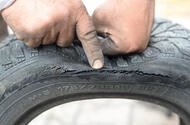Why Are More UK Drivers Getting Penalised for Unsafe Vehicles?
If you’ve noticed more headlines about unsafe cars on UK roads lately, you’re not imagining things. The number of drivers receiving penalty points for unroadworthy vehicles has shot up dramatically in the past year. According to recent data, 13,109 people were penalised in 2024 for driving unsafe vehicles—a staggering jump from 8,614 the year before. That’s more than a 50% increase in just twelve months.
So, what’s really going on here? Is this a sign that more people are taking risks with their cars, or are authorities simply catching more offenders? Let’s dig into the numbers, the reasons behind the trend, and what it means for everyday drivers.
What’s Causing the Spike in Unsafe Vehicle Penalties?
The biggest culprit behind these penalties? Tyres. Out of all the defects flagged, tyre issues were by far the most common, with 8,495 drivers penalised for having tyres in poor condition. That’s not just a random blip—industry experts say it’s part of a much bigger problem.
Brakes were another major issue, with 1,190 motorists penalised for faulty brakes. That’s nearly six times higher than the previous year, when only 181 drivers were caught.
Why the sudden surge? According to Nick Mullender, head mechanic at the RAC, it could be a mix of factors. Maybe more drivers are taking chances and skipping essential maintenance. Or perhaps police are getting better at spotting and penalising unsafe vehicles. Either way, the outcome is the same: more unsafe cars are being flagged, and that’s a real concern for road safety.
Are Certain Regions Worse Than Others?
Turns out, where you live in the UK can make a difference. Greater London topped the list, with 1,765 drivers penalised for unsafe vehicles. Yorkshire and the Humber came next with 1,373, followed by South East England at 1,167. Urban areas tend to see more enforcement, but experts warn that the problem is widespread and not limited to any one region.
Is Vehicle Maintenance Really Getting Worse?
The numbers suggest so. There’s a growing trend of cars failing their MOTs due to tyre issues. In fact, last year saw a record number of MOT failures for this reason. What’s even more worrying is that over a third of these cars had already received advisory notices about their tyres the previous year. In other words, many drivers were warned but didn’t take action.
This points to a bigger issue: a decline in regular vehicle maintenance. With the cost of living rising, some motorists may be putting off repairs or skipping checks altogether. But as the data shows, ignoring those advisories can lead to more serious consequences down the road.
Is the Current System for Flagging Unsafe Cars Working?
Many in the industry say the system needs an overhaul. Stefan Hay, CEO of the National Tyre Distributors Association, argues that the MOT advisory system isn’t doing enough. He’s called for mandatory follow-ups on tyre-related advisories to make sure drivers actually fix the problems, not just get a warning and forget about it.
Jamie Hassall from the Parliamentary Advisory Council For Transport Safety adds another layer to the conversation. He points out that at the time of tyre changes, around six million tyres are already below the minimum legal requirement. That’s a massive number—far more than police can realistically handle. Hassall suggests a more people-focused approach, helping drivers stay legal and safe, while targeting enforcement on those who repeatedly ignore the rules.
What Can Drivers Do to Stay Safe and Avoid Penalties?
It’s not rocket science—just start small. Regular checks on your tyres and brakes can make all the difference. If you get an advisory notice during your MOT, treat it as a serious warning, not just a suggestion. And don’t wait for something to go wrong before taking action.
If cost is a concern, there are community schemes and some garages that offer free or discounted safety checks. Taking advantage of these can help you catch problems early, often before they become expensive—or dangerous.
The Bottom Line: Why This Matters for Everyone on the Road
The rise in unsafe vehicles isn’t just a statistic—it’s a wake-up call. Whether it’s due to neglect, financial pressures, or gaps in the current system, the end result is the same: more risk for everyone on the road. Staying on top of basic maintenance isn’t just about avoiding penalty points; it’s about keeping yourself and others safe.
As the conversation around MOT reform and vehicle safety continues, one thing is clear: a proactive approach benefits everyone. So next time you’re tempted to ignore that warning light or put off a tyre check, remember—the outcome could be game-changing, for better or worse.

